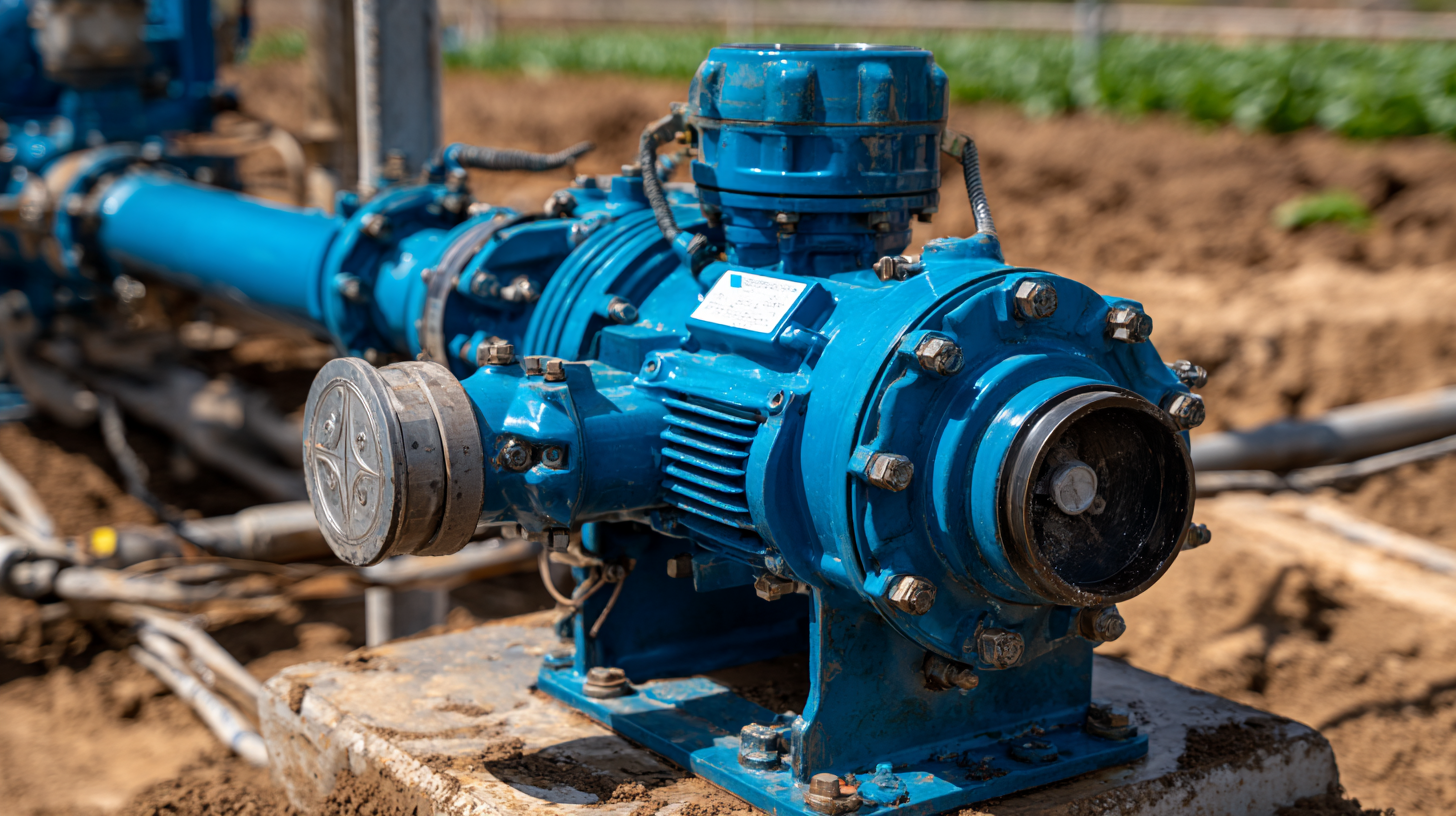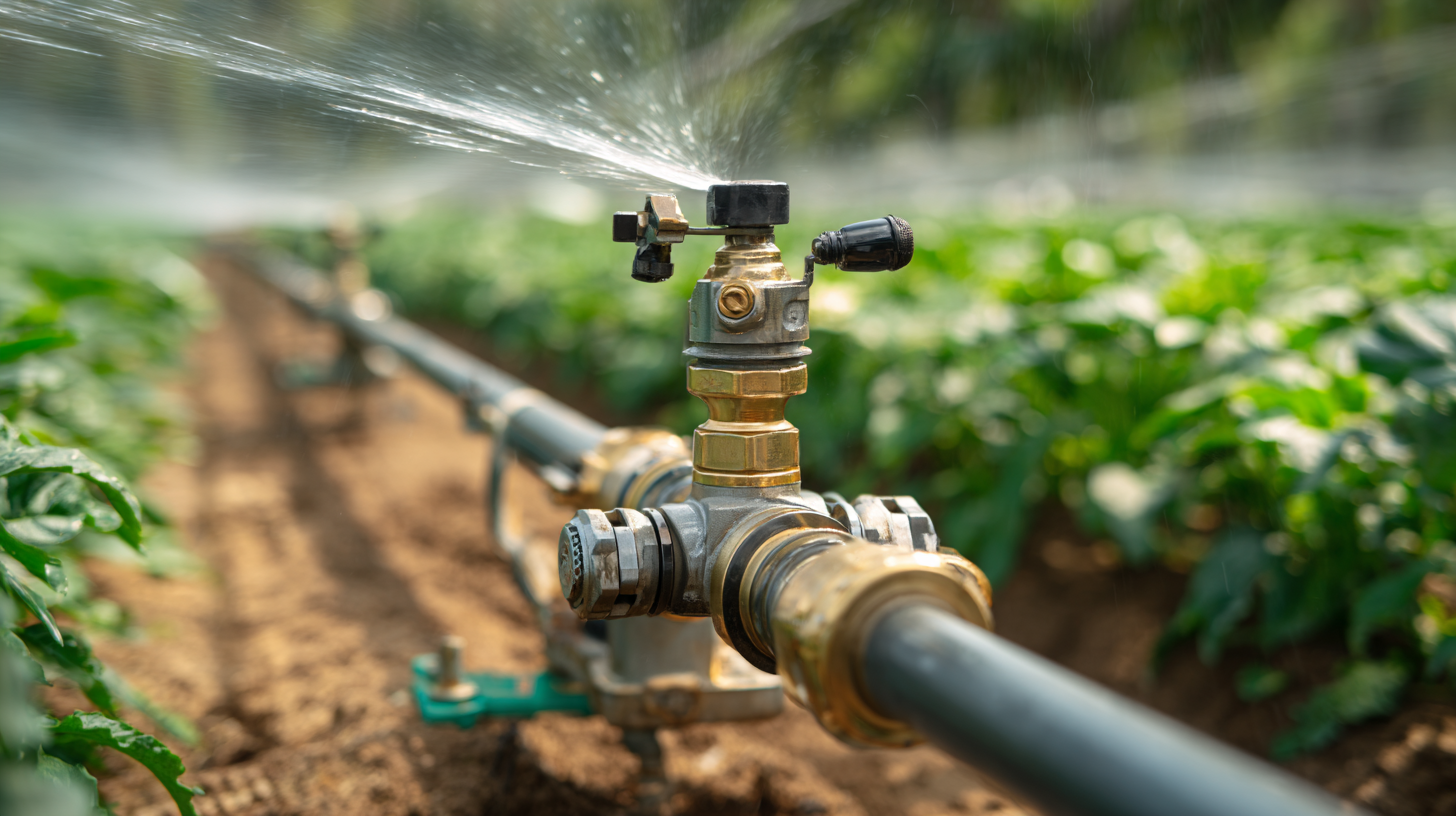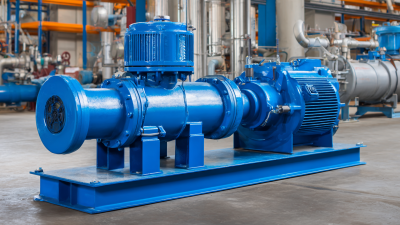Unleashing Efficiency: How High-Pressure Water Pumps Transform Agricultural Irrigation Systems
In recent years, the agricultural sector has experienced a significant transformation driven by advancements in irrigation technology, particularly with the introduction of high-pressure water pumps. According to a report by the Food and Agriculture Organization (FAO), efficient irrigation practices can increase crop yields by up to 40%, providing a substantial boost to food security in regions struggling with water availability. Central to these advancements is the pressure pump for water, which enhances water distribution efficiency and ensures optimal coverage across vast agricultural lands. A study conducted by the Irrigation Association indicates that modern irrigation systems utilizing high-pressure pumps can reduce water usage by an average of 30%, while also increasing the speed and effectiveness of water delivery. This evolution in irrigation technology not only maximizes resource efficiency but also helps farmers adapt to the growing challenges posed by climate change and water scarcity. As we explore the transformative capabilities of high-pressure water pumps in agricultural irrigation systems, it becomes clear that these innovations are pivotal for sustainable farming practices in the future.

The Role of High-Pressure Water Pumps in Modern Agriculture
High-pressure water pumps play a crucial role in modern agriculture, significantly enhancing the efficiency of irrigation systems. With the increasing demand for food production, these pumps enable farmers to deliver water at higher pressures, ensuring uniform distribution across vast fields. This capability is essential for optimizing water supply in various agricultural setups, including greenhouses and vertical farms, where precise irrigation is critical for crop health and productivity.
In the context of agricultural resilience, the use of high-pressure water pumps allows for better management of water resources, especially in drought-prone areas. By facilitating deeper water access and reducing wastage, these pumps support sustainable practices that are vital for modern farming. As agricultural technology evolves, the integration of high-pressure water pumps not only transforms traditional irrigation techniques but also boosts overall crop yield and quality, underscoring their importance in contemporary agricultural systems.
Impact of High-Pressure Water Pumps on Agricultural Efficiency
Advantages of Efficient Irrigation for Crop Yield Improvement
Efficient irrigation systems are paramount in boosting crop yield, especially in an era where water scarcity poses significant challenges. Recent studies highlight that implementing high-pressure water pumps can increase irrigation efficiency by up to 30%. According to the Irrigation Association, modern high-pressure systems not only optimize water usage but also enhance the uniform distribution of water across fields, which is crucial for the healthy growth of crops. This advancement minimizes water wastage, allowing farmers to invest more resources in improving productivity rather than managing water shortages.
In a report published by the Food and Agriculture Organization (FAO), it is noted that enhancing irrigation efficiency can lead to a yield increase of 20-50%, depending on the crop type and regional practices. By adopting advanced technologies like high-pressure water pumps, farmers can ensure that their crops receive adequate water, particularly during critical dry seasons. This not only safeguards against yield loss but also supports sustainable agricultural practices by using water more judiciously and maintaining soil health. As such, embracing efficient irrigation solutions is pivotal in achieving higher crop yields while promoting environmental sustainability.
Unleashing Efficiency: How High-Pressure Water Pumps Transform Agricultural Irrigation Systems
| Irrigation Method | Water Usage (liters/ha) | Crop Yield (tons/ha) | Efficiency (%) | Cost (USD/ha) |
|---|---|---|---|---|
| Drip Irrigation | 5000 | 10 | 90 | 800 |
| Sprinkler Irrigation | 7000 | 8 | 80 | 600 |
| Surface Irrigation | 9000 | 5 | 60 | 400 |
| Subsurface Irrigation | 4000 | 12 | 95 | 1000 |
Comparing Traditional Irrigation Methods with High-Pressure Systems
Traditional irrigation methods, such as flood and furrow systems, have long been the standard in agriculture. While effective in certain contexts, these methods often lead to inefficient water use and uneven distribution. Farmers may struggle with surface runoff and evaporation losses, resulting in either over-watering or under-watering crops. Furthermore, traditional systems can be labor-intensive, requiring significant manual input for land preparation and management.

In contrast, high-pressure water pumps offer a transformative approach to agricultural irrigation. These systems enable precise water delivery directly to the plants’ root zones, enhancing water efficiency and minimizing waste. By utilizing advanced technology, high-pressure pumps can adjust to varying field conditions and crop needs, ensuring optimal moisture levels. This not only promotes healthier crops but also reduces energy costs associated with water management. In areas facing water scarcity, the shift to high-pressure irrigation systems signifies a crucial step towards sustainable farming practices while improving overall yields.
Steps for Implementing High-Pressure Water Pumps in Farming
Implementing high-pressure water pumps in agricultural irrigation systems can significantly enhance operational efficiency and crop yield. First, farmers should assess their current irrigation setup to identify areas where high-pressure water pumps can be integrated. This involves analyzing water availability, the size of the fields, and the crops being cultivated. Once the assessment is complete, selecting the appropriate pump model based on pressure requirements and energy efficiency is crucial.
Next, installation of the high-pressure water pumps should be carried out by professionals to ensure optimal performance. This may include reconfiguring existing piping systems to handle increased pressure and designing a control system that allows farmers to monitor and adjust water flow as needed. Regular maintenance checks and updates to the pumps will further ensure their longevity and effectiveness in providing consistent water supply for crops. Through these steps, high-pressure water pumps can transform conventional irrigation practices into more efficient and productive systems.

Future Innovations in Agricultural Water Pump Technology
As the agricultural sector seeks to enhance efficiency,
high-pressure water pumps
are emerging as a game-changer in irrigation systems. The global household water pump market is expected to surge
from $18.58 billion in 2024 to
$26.92 billion by 2032, marking a notable compound annual growth rate (CAGR)
of 4.8%. This growth reflects a broader trend towards adopting
advanced irrigation technologies
that optimize water usage in the face of increasing industrialization and urbanization, particularly in regions with
uneven water resource distribution.
Innovations in agricultural water pump technology are pushing the boundaries of efficiency and sustainability.
High-pressure pumps not only improve water delivery but also contribute significantly
to water conservation efforts. As farmers embrace these advancements, they can mitigate the impacts of
water scarcity while ensuring sustainable agricultural practices. The ongoing development in pump technologies,
including energy-efficient designs
and smart irrigation systems, will further revolutionize how water resources are managed, leading to improved crop yields
and better environmental stewardship.
Related Posts
-

Ultimate Guide to Choosing the Right Water Pump for Your Needs
-

How to Choose the Best Pressure Pump for Water Efficiency Based on Industry Standards
-

Why Investing in a Water Tank Pump is Essential for Efficient Water Management
-

Exploring the Best Small Pumps for Home and Garden: Your Ultimate Buying Guide
-

11 Best Soft Wash Pump Solutions for Effective Cleaning
-

How to Optimize Your 12V Diaphragm Pump for Maximum Efficiency and Performance